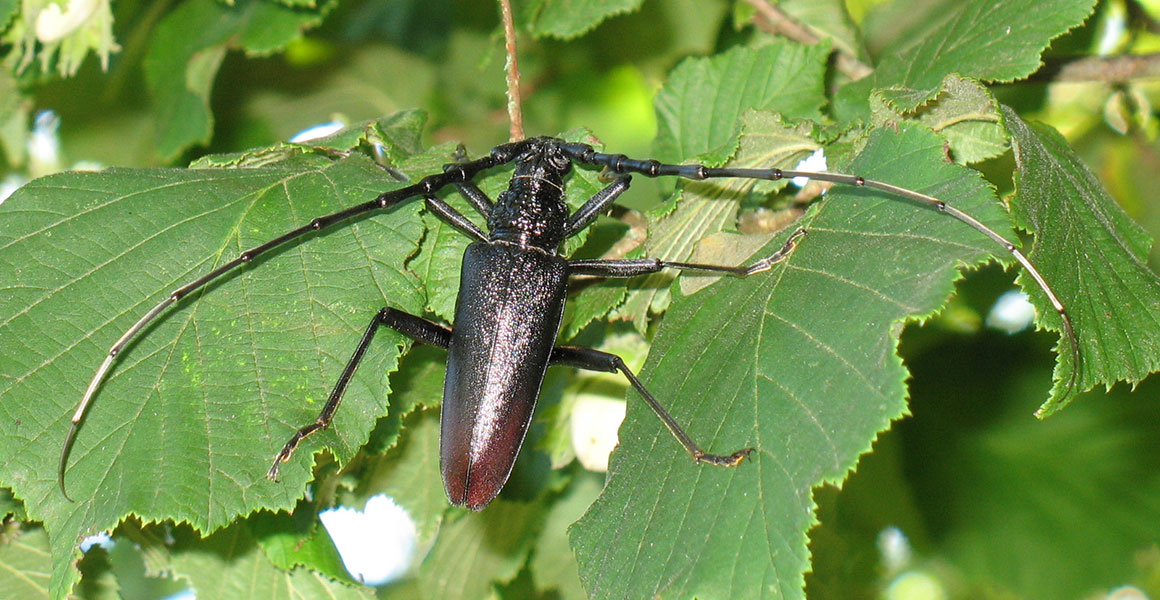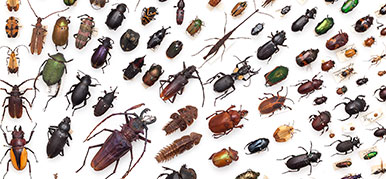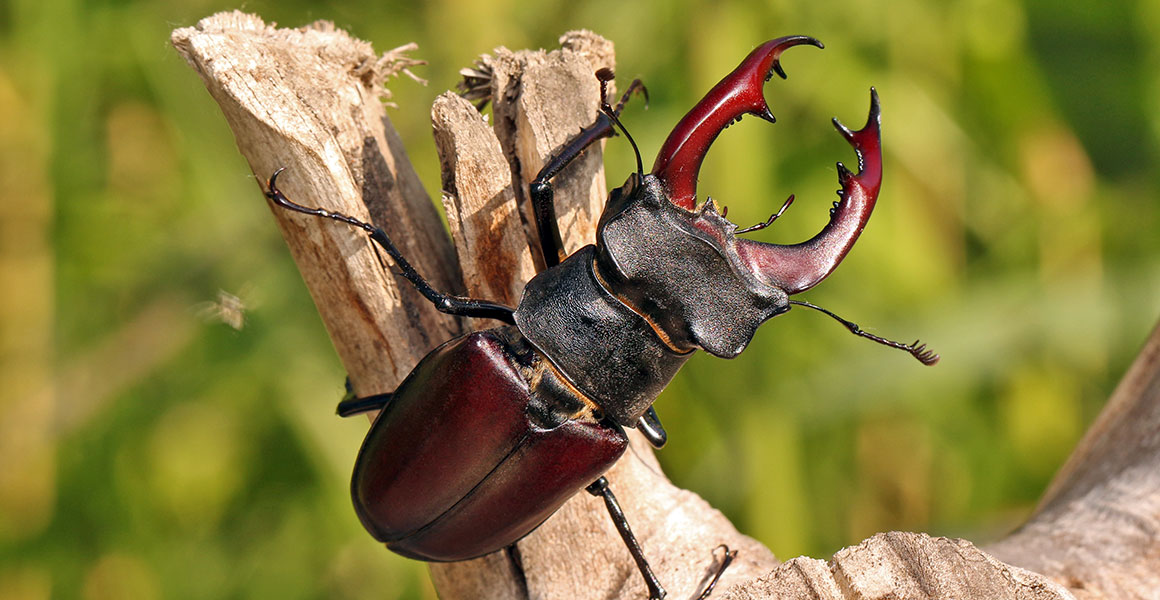The great capricorn beetle has been extinct in Britain for hundreds, if not thousands, of years - but two made an unexpected reappearance in 1976.

A great capricorn beetle © Lidewijde at Ducth Wikipediaopens in a new window Via Wikimedia Commons (CC BY-SA 3.0opens in a new window)
The great capricorn beetle (Cerambyx cerdo) is found locally throughout Europe and is one of the continent's largest beetles. It has a body length of around four to five centimetres excluding the antennae (which are much longer in the males).
The International Union for Conservation of Nature (IUCN) lists the beetles as near threatened across Europeopens in a new window. This is because of the decline of the veteran trees where they live out their lives.
The beetles never usually move far from their veteran trees. Females lay their eggs into slits within the bark and as larvae (a stage that takes just over two years) they feed on the wood. The full life cycle of the beetles takes between two to five years, depending on local climatic factors. Pupation lasts a month.
The adult overwinters, then emerges in the spring. The beetles will then feed on sap.
This species is a member of the family Cerambycidae - the longhorn beetles, characterised by their extremely long antennae. There are more than 30,000 species of longhorn beetle currently described in the world, 69 of which are currently found in the UK.
Beetlemania
Having been extinct in Britain possibly for thousands of years, the great capricorn beetle caused a stir when evidence of its presence was found in the Cambridgeshire countryside in 1976.
In the video above, Beulah Garner, Senior Curator of Coleoptera at the Museum, explains the story behind the unexpected rediscovery of these long gone beetles.

British wildlife
Find out about the plants and animals that make the UK home.

Discover Coleoptera
Find out more about over eight million specimens that are part of the Museum's Coleoptera collections.
Find out more
Watch more videos about the Museum and the work of its pioneering scientists.


Don't miss a thing
Receive email updates about our news, science, exhibitions, events, products, services and fundraising activities. We may occasionally include third-party content from our corporate partners and other museums. We will not share your personal details with these third parties. You must be over the age of 13. Privacy notice.
Follow us on social media